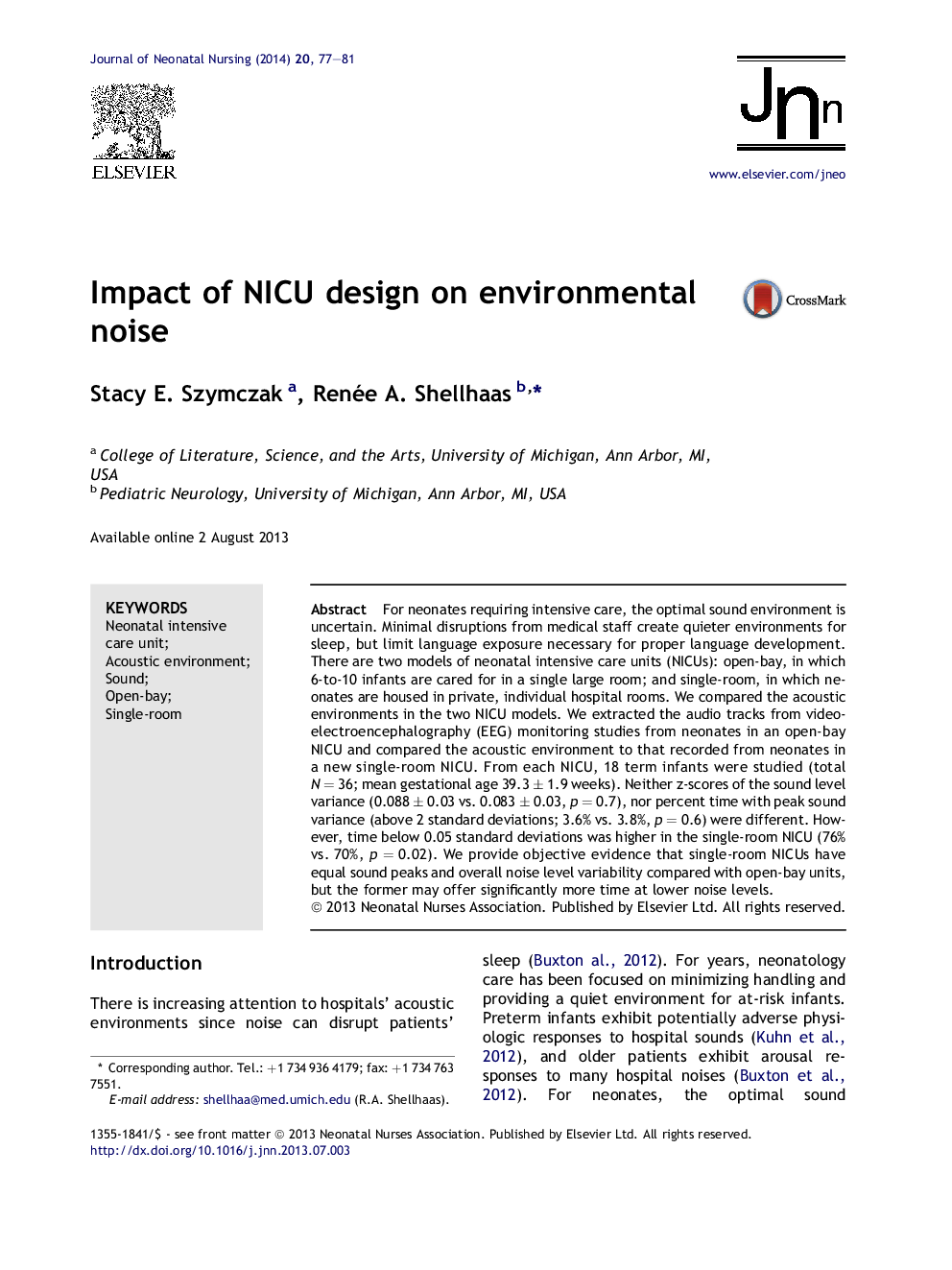| Article ID | Journal | Published Year | Pages | File Type |
|---|---|---|---|---|
| 2631465 | Journal of Neonatal Nursing | 2014 | 5 Pages |
For neonates requiring intensive care, the optimal sound environment is uncertain. Minimal disruptions from medical staff create quieter environments for sleep, but limit language exposure necessary for proper language development. There are two models of neonatal intensive care units (NICUs): open-bay, in which 6-to-10 infants are cared for in a single large room; and single-room, in which neonates are housed in private, individual hospital rooms. We compared the acoustic environments in the two NICU models. We extracted the audio tracks from video-electroencephalography (EEG) monitoring studies from neonates in an open-bay NICU and compared the acoustic environment to that recorded from neonates in a new single-room NICU. From each NICU, 18 term infants were studied (total N = 36; mean gestational age 39.3 ± 1.9 weeks). Neither z-scores of the sound level variance (0.088 ± 0.03 vs. 0.083 ± 0.03, p = 0.7), nor percent time with peak sound variance (above 2 standard deviations; 3.6% vs. 3.8%, p = 0.6) were different. However, time below 0.05 standard deviations was higher in the single-room NICU (76% vs. 70%, p = 0.02). We provide objective evidence that single-room NICUs have equal sound peaks and overall noise level variability compared with open-bay units, but the former may offer significantly more time at lower noise levels.
